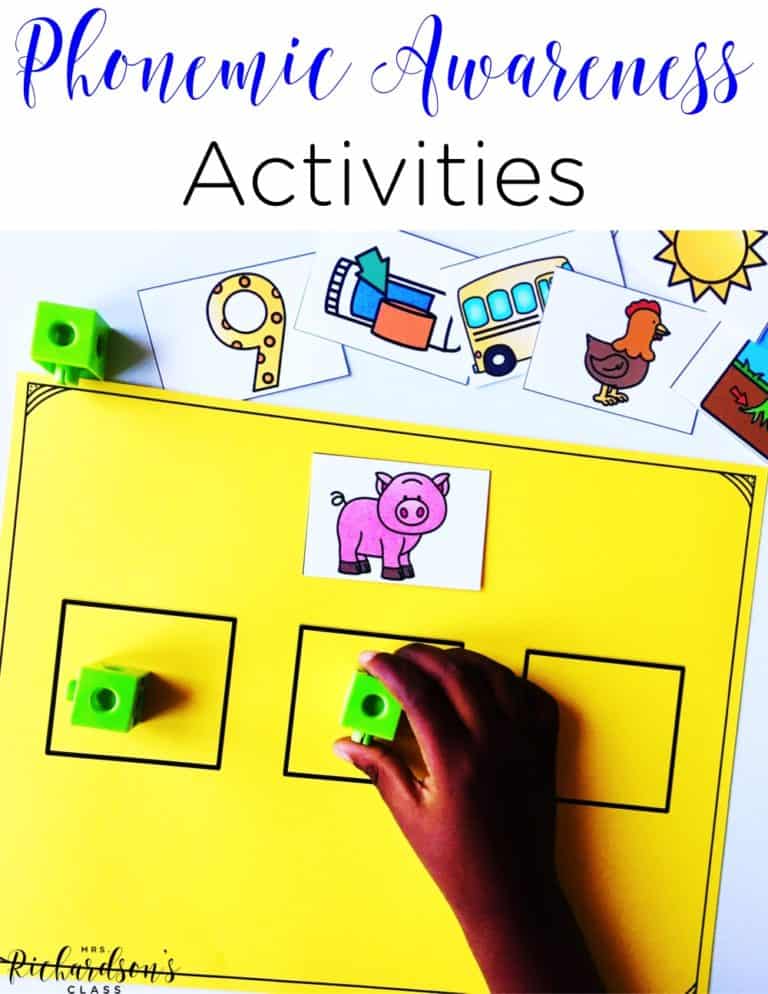



You’ve set up your classroom and small group area. You’ve found a solid set of decodable and leveled readers. You’ve assessed your students and formed reading small groups. But do you know what the first day of guided reading looks like? When you call students’ names to your table, do you know what you’re going to do with five little faces looking at you?
The first day of guided reading is very exciting, but knowing exactly what to do can make the groups go much smoother. Having a well-planned first meeting with your reading small groups can set the expectations for the rest of the year. Let’s dive into some things you can do on day one of reading small groups to have a successful year!
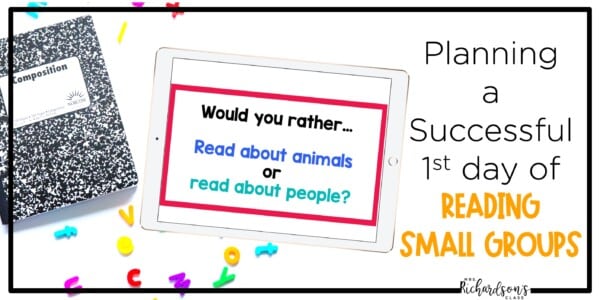
By having students play a get to know you game, not only do they get to know each other better, but you get to know students’ interests, too! Then, you can easily connect with students on a personal level. One simple activity to try is “Would You Rather”. Just jot down a few questions and give everyone a chance to answer. Here are a few you could start with:
Would you rather…
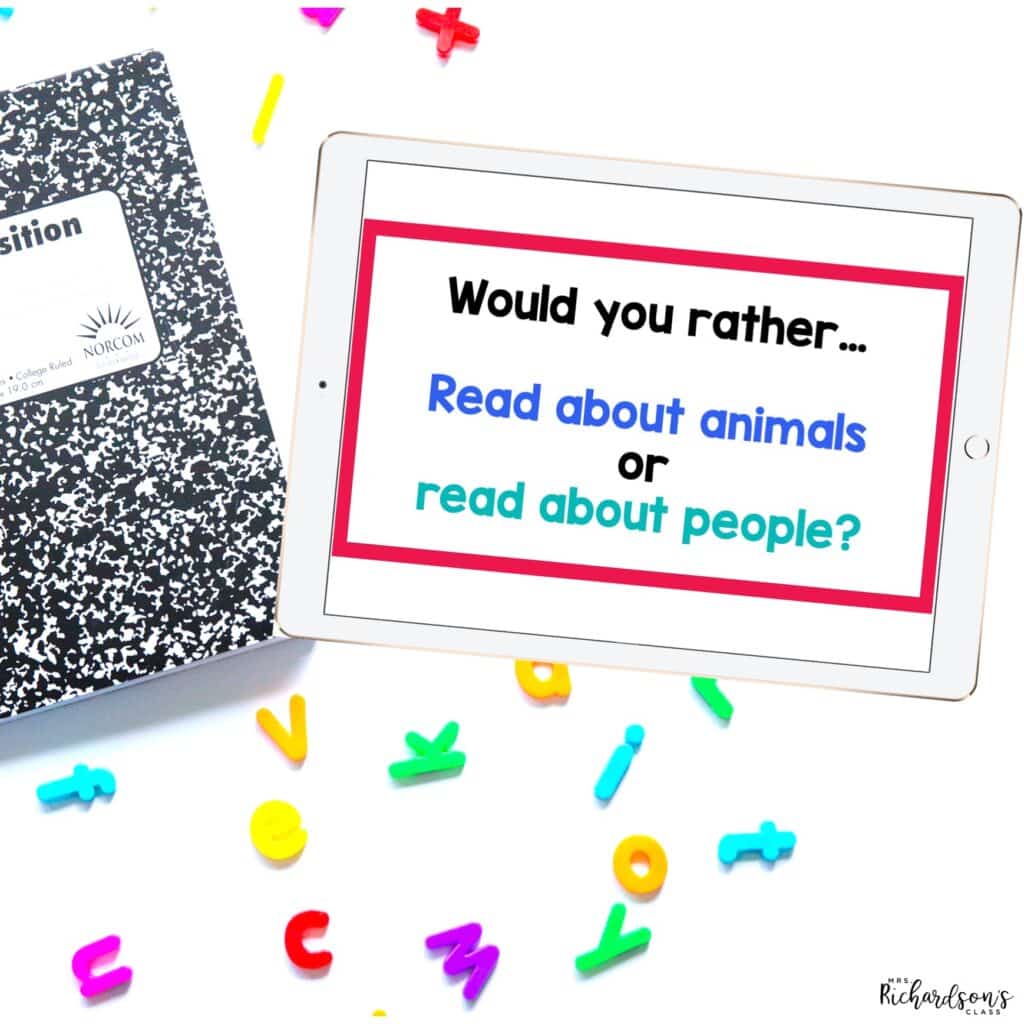
Some students may have never participated in a reading small group before. You will need to introduce the group and setting the expectations for how you will use the time together is important. Explicitly tell each group why they are meeting with you (so that they can practice problem-solving and learn how to implement reading strategies while reading). Then, give students an overview of what they will be doing each time they meet with you. You can find an example reading small group schedule on my blog HERE.
Next, you’ll want to practice book routines with each reading group. Where will they get their books from? What will they do with them afterward? When you hand them the book, will they set it on the table and wait for you to ask them to open it? Give your readers a book to physically practice with. Then they will know exactly what to do each time they come to your table. This will save you tons of time later not having to constantly remind them!
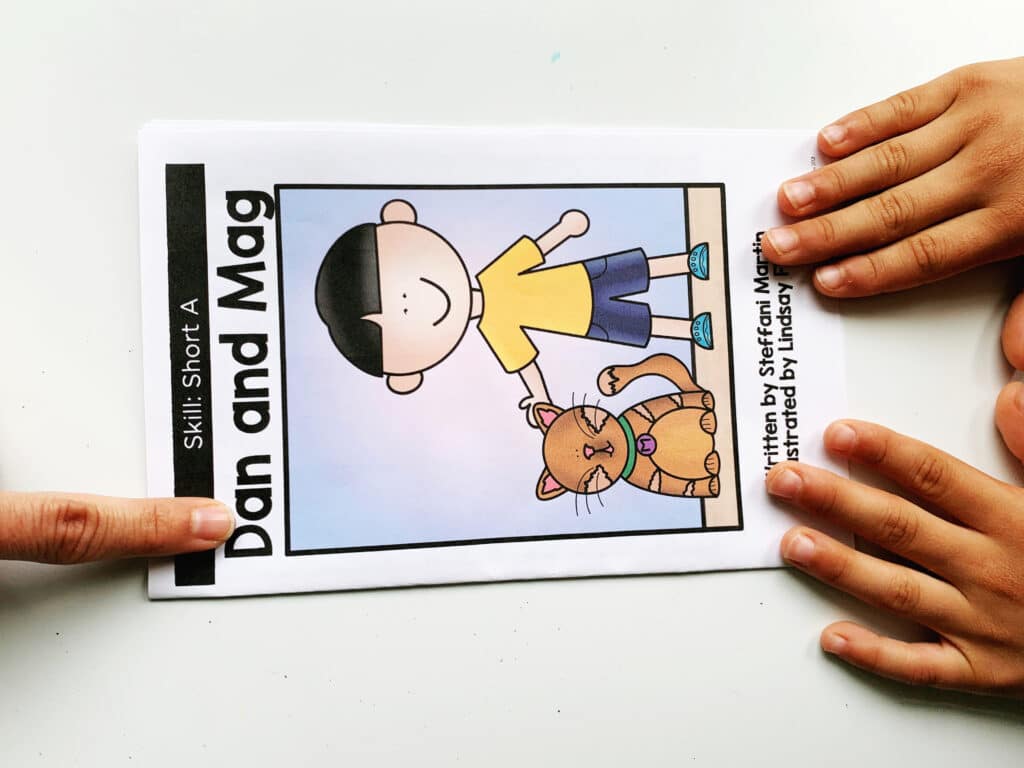
For kindergarten students, you’ll also want them to review what to do with a book. Reviewing and teaching concepts about print will be very important for these young readers. We need our readers to understand how to open a book, when to turn the page, identify letters, words, and sentences, and so much more!
Another activity to do during the first day of reading small group is to show students different literacy manipulatives they might use during reading small groups. Give them a chance to touch and play with them, too. This will help save time in the future because these items won’t be brand new. Some items you may want to have out for the first meeting are:
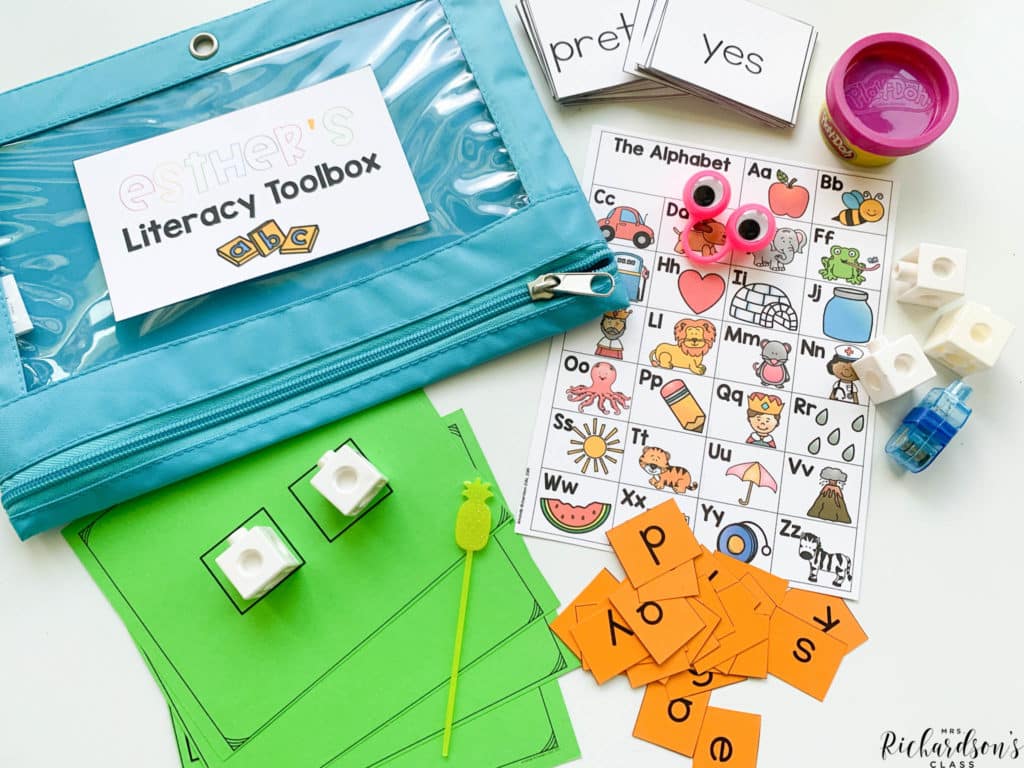
You can get a FREE set of printable literacy manipulatives on my blog HERE. You can make a set of six to use with each group at your table or give each student their own set of literacy manipulatives to help prevent the spread of germs.
If you have engaging and high-quality literacy stations, your students might be disappointed to miss out on a station while they’re with you during reading small groups. You’ll want to make a plan for what you want students to do and let them know. When they know what happens when you pull them from a station, they’ll be more likely to be excited to go to your reading small group.
There isn’t a right or a wrong way to handle what to do when students miss a station. You choose whatever you think will be best for your students. Here are a few options to consider:
After your first day of reading small group, you’ll be ready to start small group lessons with your students. I love getting to begin this part of their reading journey! To get started, you may want to begin with leveled readers while you help students get to know and understand what reading groups are all about.
Why leveled readers first?
Because they are easy.
They are predictable.
Don’t stay here, but you can START here to help teach the routine.
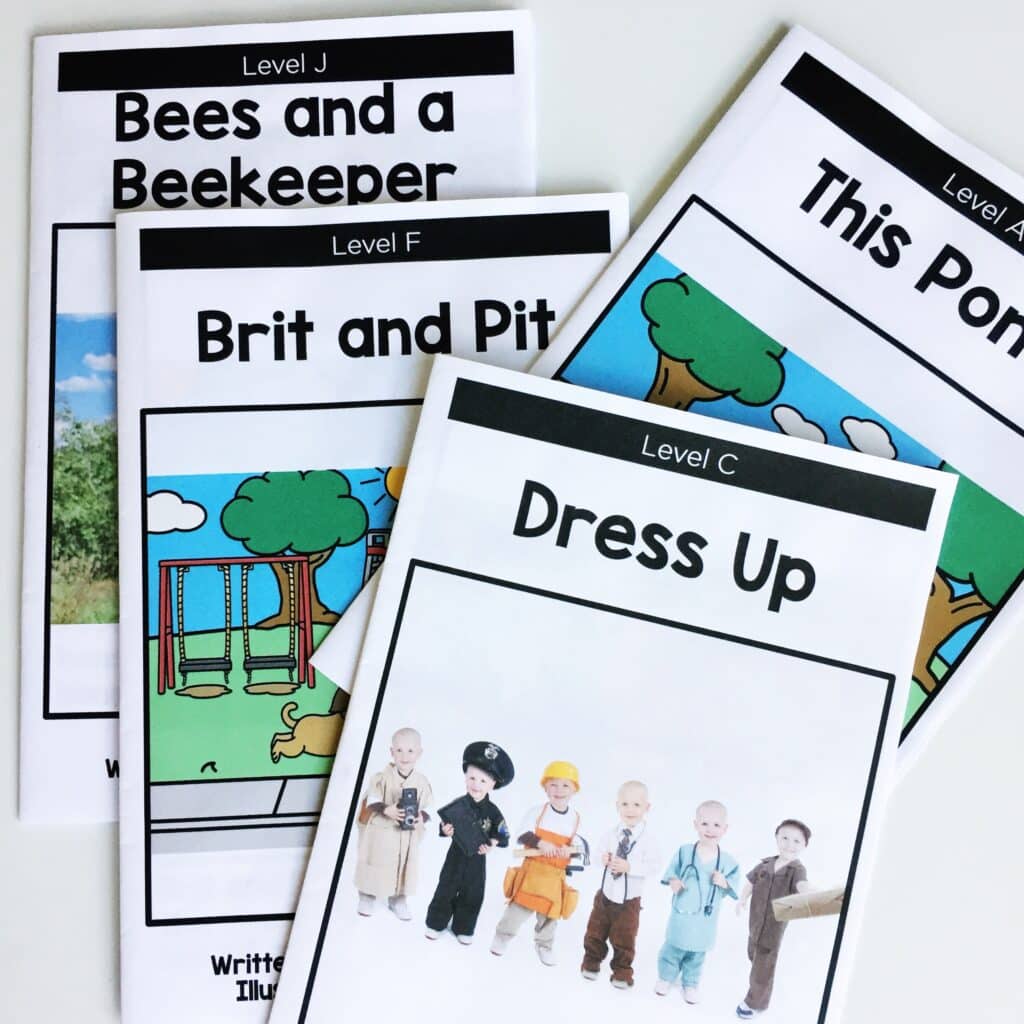
If you are hunting for leveled guided reading books and lessons that keep the science of reading in mind, I have them in my shop. There are guided reading kits for levels A-M in both digital and print versions.
Grab them here: Kindergarten Guided Reading Bundle | First Grade Guided Reading Bundle | Second Grade Guided Reading Bundle
After you’ve gotten to know students’ reading skills and capabilities better, switch to decodable readers to better refine their reading skills. This is where the magic will start to happen for your growing readers!
Decodable books allow students to practice specific phonics patterns and build strong reading foundational skills. To help get you going with decodable readers, I have quality decodable texts and lessons that cover short vowels, digraphs, blends, and long vowels.
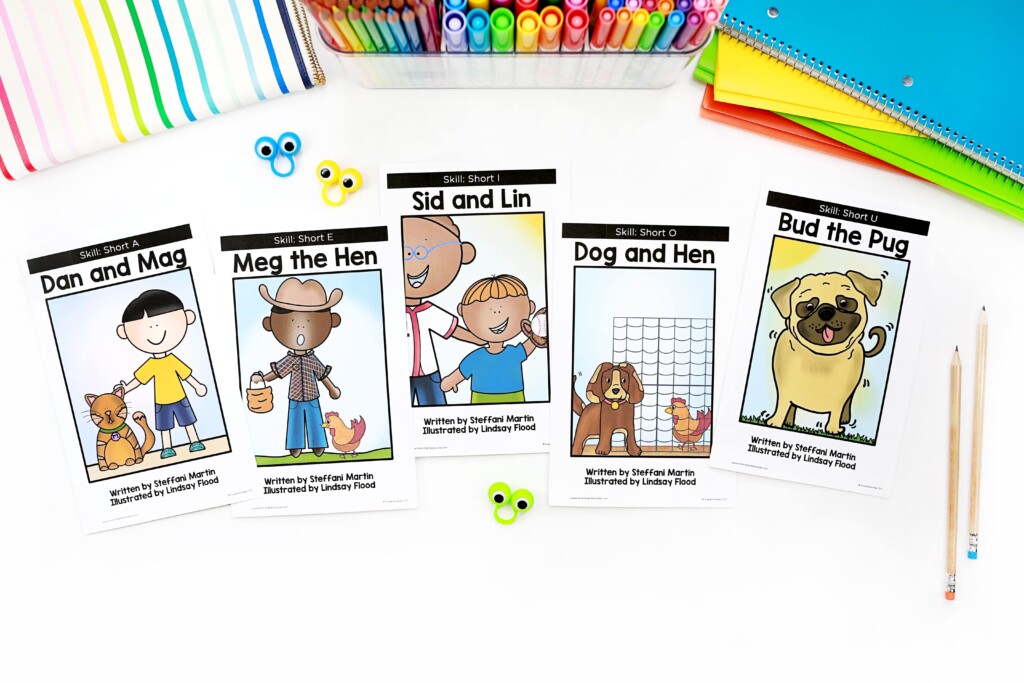
Each decodable reader and lesson set has books in color, black and white, passage, and digital versions. Each book has a corresponding, easy-to-follow lesson plan so you know exactly what to do during reading small group lessons. Plus, each lesson includes phonics practice, word work, and a writing extension.
Check them out here: Short Vowel Decodables | Blends Decodables | Digraphs Decodables | Long Vowel Decodables | Decodable Books BUNDLE
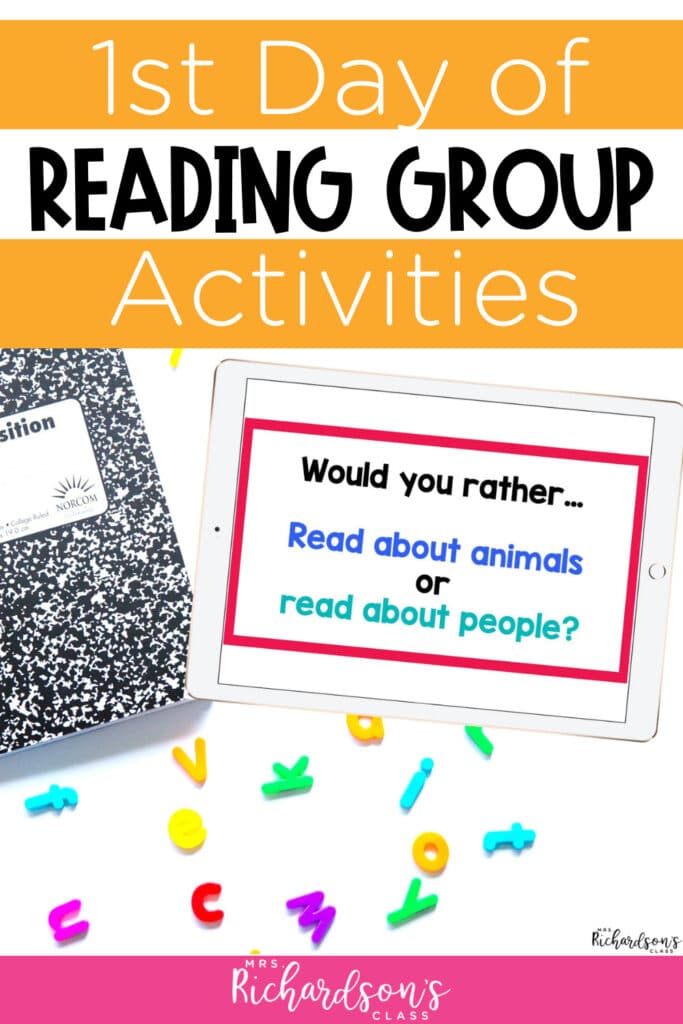
There is no right and wrong way to begin your first day of reading small groups. Get to know your readers. Introduce the time to them. Be intentional. You WILL make a difference in their reading journey!

Want to use the latest research to boost your readers during small groups? This FREE guide is packed with engaging ideas to help them grow!

I’m a K-1 teacher who is passionate about making lessons your students love and that are easy to implement for teachers. Helping teachers like you navigate their way through their literacy block brings me great joy. I am a lifelong learner who loves staying on top of current literacy learning and practices. Here, you’ll find the tools you need to move your K-2 students forward!


| Cookie | Duration | Description |
|---|---|---|
| cookielawinfo-checkbox-analytics | 11 months | This cookie is set by GDPR Cookie Consent plugin. The cookie is used to store the user consent for the cookies in the category "Analytics". |
| cookielawinfo-checkbox-functional | 11 months | The cookie is set by GDPR cookie consent to record the user consent for the cookies in the category "Functional". |
| cookielawinfo-checkbox-necessary | 11 months | This cookie is set by GDPR Cookie Consent plugin. The cookies is used to store the user consent for the cookies in the category "Necessary". |
| cookielawinfo-checkbox-others | 11 months | This cookie is set by GDPR Cookie Consent plugin. The cookie is used to store the user consent for the cookies in the category "Other. |
| cookielawinfo-checkbox-performance | 11 months | This cookie is set by GDPR Cookie Consent plugin. The cookie is used to store the user consent for the cookies in the category "Performance". |
| viewed_cookie_policy | 11 months | The cookie is set by the GDPR Cookie Consent plugin and is used to store whether or not user has consented to the use of cookies. It does not store any personal data. |
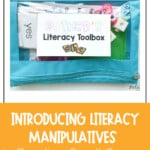
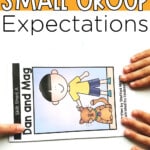
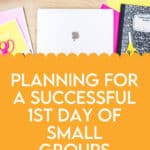
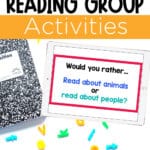
2 Responses
Quick question…..are these Science of Reading aligned? Is there a way to demonstrate this? Thank you for any and all help you are able to provide!
Hi Amy! I’m not sure if you are referring to the decodable readers or the leveled kits. The decodable readers are and we are editing the leveled kits as we speak. Level A is complete!